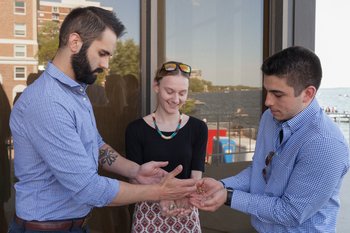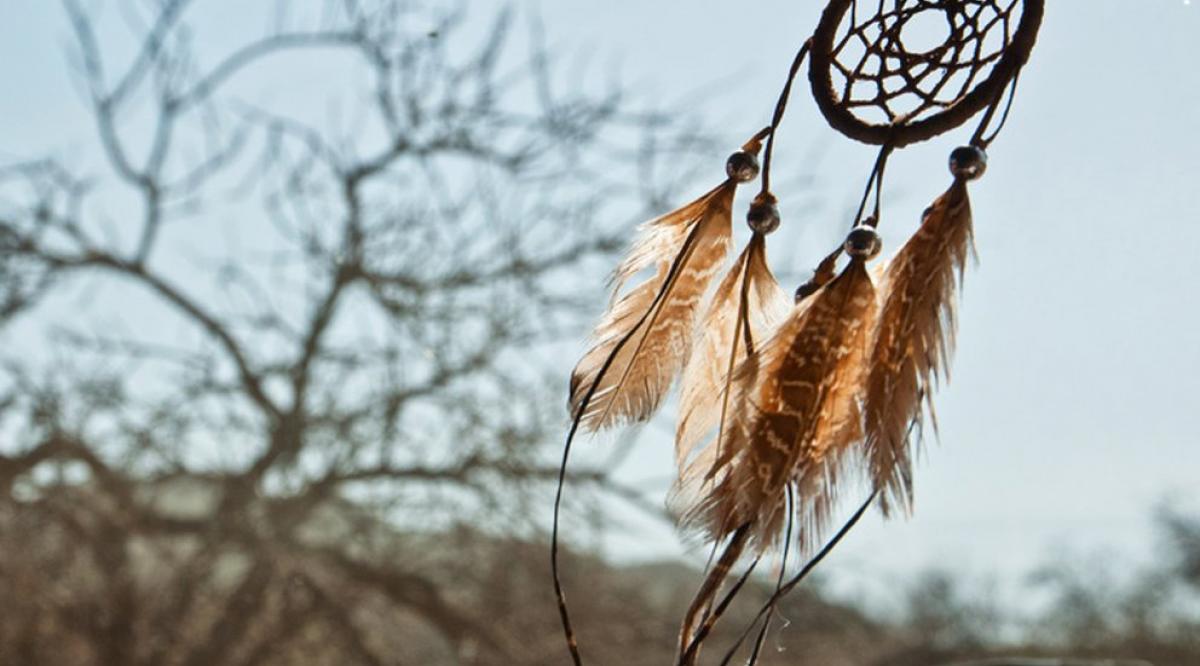The event began ceremoniously, with a spiritual leader lighting a ritual pipe, sharing a traditional Ojibwe prayer, and blessing those assembled with a smoldering batch of sage. These age-old customs launched a meeting on a brand-new effort: the creation of the country’s first required medical school curriculum on Native American health.
The curriculum was greatly needed in Minnesota, where American Indians constitute the largest minority in parts of the state, said Melissa Lewis, PhD, who led the University of Minnesota Medical School, Duluth campus (UMMSD) effort while teaching there. Indigenous people throughout the United States, in fact, face major health disparities and suffer disproportionately from diabetes, heart disease, cancer, and substance abuse compared with other racial and ethnic groups, noted Lewis, now an assistant professor in the Department of Family and Community Medicine at the University of Missouri School of Medicine.
So Lewis set out to develop a curriculum to improve understanding of the historical, cultural, and spiritual factors that influence Indian health. She noted the devastating impact of a traumatic history that included forced sterilization. “There is some mistrust of medical providers by Native people. I believe that some basic education of medical providers can help reduce the mistrust,” she said. “If you don’t understand your patients’ health beliefs or decision making, you need to learn more about where they come from.”
A handful of U.S. medical schools offer electives related to Native health, Lewis said, but she wanted the material to be required, and the UMMSD administration agreed. In September 2013, Lewis’ team spent several months studying what to teach, a process she wrote about in Academic Medicine. A year later, UMMSD launched a seven-hour block of lectures for first-year students, embedded within an existing course on rural health. So far, some 180 students have participated.
Gleaning local cultural insights
The University of Washington (UW) School of Medicine offers an optional program on Native American health and culture. To effectively teach about indigenous health, medical schools need to build a strong connection with the local community, said Jason Deen, MD, who heads the Indian Health Pathway (IHP) at the medical school.
That’s why, in addition to 14 or so hours of lecture and a research project, the IHP certificate program requires students to complete two clerkships: one with a traditional Native provider and one with a physician steeped in the community. A required community service project also helps foster cultural humility, teaching students to relinquish unconscious biases and to value their patients as partners.
Since it was established in 1992, the pathway has graduated more than 90 students, many of whom ultimately serve in Native communities, according to Deen. How did UW School of Medicine build such a robust program? Deen believes it’s mostly because the school has a fairly large base of Native American faculty members.
“If you don’t understand your patients’ health beliefs or decision making, you need to learn more about where they come from.”
Melissa Lewis, PhD
University of Missouri School of Medicine
At the University of Wisconsin School of Medicine and Public Health, recruiting Native faculty and students was a central goal in creating the Native American Center for Health Professions (NACHP) four years ago. NACHP arranges research projects and clinical clerkships in tribal communities, explained Melissa Metoxen, the center’s community and academic support coordinator. Students often work with a primary preceptor, live within a reservation, and join in community efforts such as diabetes outreach and home health visits.
Currently, the program’s didactic content involves one to two hours in a class called “Health Care in Diverse Communities.” Students who want more can take courses remotely through a partnership with North Dakota State University, which offers a master’s degree focused on Indian public health. But Metoxen is working toward the goal of including more lectures on Native health in the Wisconsin medical school curriculum.
Other schools are exploring ways to include or expand Indian health education, too. The Oregon Health & Science University, for example, is planning an extensive initiative for 2018: a series of seminars, a Native American health pathway, and a course similar to Lewis’.
Filling the knowledge gap
UMMSD is continuing to refine its curriculum. The lecture lineup—now at eight hours—is changing somewhat to hone in on specific medical challenges and opportunities, said Mary Owen, MD, who directs the school’s Center of American Indian and Minority Health and oversees the curriculum. New this year, for example, is a session by a Native healer that will cover how patients sometimes meld Western and traditional medicine.

Also new is a role-playing session involving Native American health issues, some of which can be especially daunting to non-Native students, said Owen, an assistant professor in the Department of Family Medicine and Community Health. “We want them to feel less like an outsider to this community [and] to give them hands-on solutions.”
Consider the deadly opioid epidemic, which has hit Native Americans particularly hard. Owen believes tribal values like community connection and respect for elders can strongly bolster treatment.
For UMMSD student Nathan Ratner, now in his third year, some of the most valuable lessons involved setting aside his own cultural assumptions. Take, for example, a patient’s lack of eye contact. Previously, said Ratner, he may have assumed it signaled disengagement, but he now understands that it could mean something quite different, including respect.
Even more important, noted Ratner, was learning to take a strengths-based instead of a deficits-based approach to patient care. “Rather than focusing on what they don’t have available or what may be out of their economic means, focus on what they do have,” such as strong social, spiritual, or family ties. “You need to find a way systematically, strategically, and emotionally to empower patients to do what they can.”
Ratner, who expects to work with Indian patients, called the curriculum eye-opening. “These aren’t just facts from the past. These are experiences that have real emotional weight,” he said. “All of this history is coming into that space with you and the patient.”
The curriculum has had a measurable impact. Lewis polled the curriculum’s first two cohorts before the course, immediately after, and six months later, and found that students significantly gained and retained information about Native health, culture, and history. She also found a slight uptick in domains such as cultural empathy and social justice awareness. “It’s implicit that seven hours is not enough if we want to create empathetic providers who are socially aware,” she said. “But maybe we’re on a good start, maybe we’re on a good path.”

